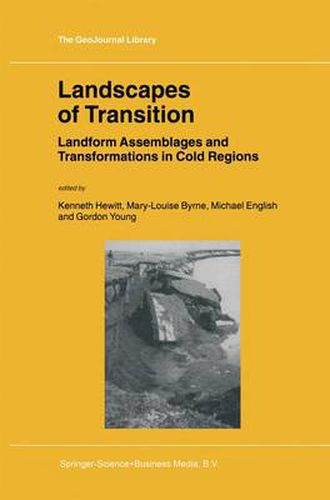Readings Newsletter
Become a Readings Member to make your shopping experience even easier.
Sign in or sign up for free!
You’re not far away from qualifying for FREE standard shipping within Australia
You’ve qualified for FREE standard shipping within Australia
The cart is loading…






This title is printed to order. This book may have been self-published. If so, we cannot guarantee the quality of the content. In the main most books will have gone through the editing process however some may not. We therefore suggest that you be aware of this before ordering this book. If in doubt check either the author or publisher’s details as we are unable to accept any returns unless they are faulty. Please contact us if you have any questions.
This volume is mainly concerned with landform and sediment associations in cold regions, and their transformations over time and space in response to changing environments. Most of the chapters adopt a landscape approach, with the goal of describing, interpreting and comparing regional landscapes. The emphasis here is on landscapes that are formed or constrained by cold conditions. In particular, we look at landform morphology, earth surface processes and sediments reflecting the presence of frost, ice and melt water, and the influence upon landscape of cold-adapted plants and animals. The notion of ‘transition’ is employed to address the ways in which environmental changes are uniquely expressed through adjustments in landforms and earth surface processes. It is shown that geomorphic transitions have, or tend to, generate their own temporal and spatial shape. They involve mechanisms or patterns of adjustment distinct from, and not readily obvious in, the mere chronology of, say, climate change or tectonics. Examples are discussed from high mountain and glacierized environments, from cold lowlands and coasts. Appropriate theoretical concerns are addressed in relation to the slope stability and extreme mass movement events, paraglacial regimes, changing distributions of permafrost, delta and other cold coastal development.
$9.00 standard shipping within Australia
FREE standard shipping within Australia for orders over $100.00
Express & International shipping calculated at checkout
This title is printed to order. This book may have been self-published. If so, we cannot guarantee the quality of the content. In the main most books will have gone through the editing process however some may not. We therefore suggest that you be aware of this before ordering this book. If in doubt check either the author or publisher’s details as we are unable to accept any returns unless they are faulty. Please contact us if you have any questions.
This volume is mainly concerned with landform and sediment associations in cold regions, and their transformations over time and space in response to changing environments. Most of the chapters adopt a landscape approach, with the goal of describing, interpreting and comparing regional landscapes. The emphasis here is on landscapes that are formed or constrained by cold conditions. In particular, we look at landform morphology, earth surface processes and sediments reflecting the presence of frost, ice and melt water, and the influence upon landscape of cold-adapted plants and animals. The notion of ‘transition’ is employed to address the ways in which environmental changes are uniquely expressed through adjustments in landforms and earth surface processes. It is shown that geomorphic transitions have, or tend to, generate their own temporal and spatial shape. They involve mechanisms or patterns of adjustment distinct from, and not readily obvious in, the mere chronology of, say, climate change or tectonics. Examples are discussed from high mountain and glacierized environments, from cold lowlands and coasts. Appropriate theoretical concerns are addressed in relation to the slope stability and extreme mass movement events, paraglacial regimes, changing distributions of permafrost, delta and other cold coastal development.